(Announcement: MEL Science is offering fantastic discounts until December 2nd, 2024. Their annual plan is now just $24.90 per month, significantly reduced from the regular $39.90. To claim this offer, use the code HAPPY25. For more details on MEL Science deals and discounts, be sure to check out this post.)

Read the complete MEL Science review for a better guide.
My Verdict
MEL Science is awesome for kids who love doing experiments, getting into science stuff, and having a blast while learning. If you’re a parent wanting to feed your kid’s curiosity with cool hands-on kits, definitely give MEL Science a try. Personally, I had a blast with their STEM and Physics sets. And let me tell you, using VR goggles for chemistry experiments? Mind-blowing! Sure, it might seem pricey at first, but trust me, it’s totally worth every penny.
If you want to know all about MEL Science, you’re in for a treat with our review! I’ve tried their kits myself, so I can give you the lowdown in a way that’s easy to understand and enjoyable.
I’ll be covering all the important stuff about MEL Science in this article. Here’s a sneak peek at what’s coming up…
Let’s begin with a fundamental question…
What is MEL Science?

MEL Science is an awesome learning platform just for kids and teens who dig science and love to experiment. It’s run by a UK-based company called MEL Science, founded by a guy named Vassili Philippov in 2014.
Oh, and if you’re wondering, MEL stands for “More Efficient Learning.”
With their subscription, you get fresh science kits every month, everything you need to be delivered right to your door. They’ve got kits for different ages, so there’s something for everyone.
For instance, if you’ve got kids aged 5 to 10 and you’re up for some hands-on fun, you might wanna check out their STEM kits. These let you and your kids build things like microscopes, launch digital rockets into space, and mess around with other cool educational gadgets.
But keep in mind, these kits aren’t just playthings. As a parent, you gotta be there to lend a hand with each experiment.
Who is MEL Science best suited for?
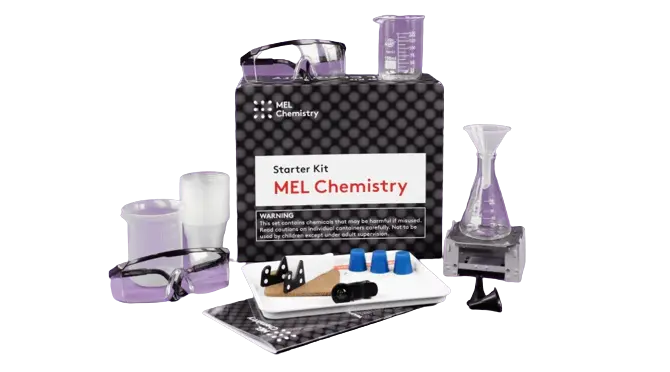
If your kids love hands-on kits, enjoy learning new stuff, and like doing experiments, and if you want to give them a fun and educational time at home, you should check out MEL Science.
MEL Science offers different subjects for different ages, including STEM, Physics, Chemistry, and Medicine.
So, if you want your child to learn and get involved in physics or chemistry, it’s important to decide which subject to go for.
Now, let’s take a closer look at each of the MEL Science subjects and give you a detailed review of each one.
MEL Science Subjects:
STEM Kits:
These awesome STEM kits are designed specifically for kids aged 5 to 10 and beyond! They cover Science, Technology, Engineering, and Math, making learning a blast.
Let’s dive into the Green Flashlight project. Your kids can explore dynamo flashlights, green energy, Ultraviolet lights, solar panels, and more with this fun project.
If your little ones are into aircraft and flying, they’ll love the Aircraft Projects. As someone who’s studied Aircraft Maintenance Engineering with a focus on Avionics, I can tell you how fascinating it is to understand how planes and helicopters fly.
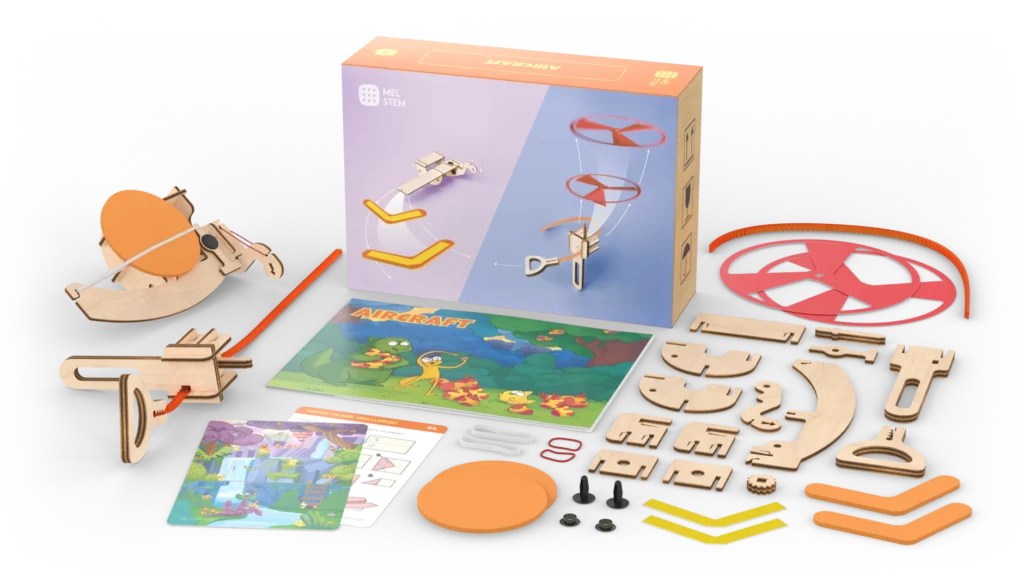
In the Aircraft Project, your child can learn about airfoils and aerodynamics by launching disks, boomerangs, and propellers. They’ll need your help and guidance for these activities. There are so many STEM kits out there, each offering unique learning opportunities. Trust me, they’re all worth trying!
MEL Science Physics Kits:
Give MEL Science Physics Kits a try! They’re packed with a bunch of cool projects, each focusing on different physics stuff.
With these kits, you and your kid get to dive into hands-on experiments, which makes learning physics way more fun and understandable.
If you’re wondering whether MEL Science kits are worth it, especially if your kid is into physics, trust me, they are. In school, we often just read about physics without actually trying stuff out.
But with kits like Electrostatics, your kid gets to learn about Van de Graaff generators and static electricity by doing experiments that’ll make their hair stand on end!
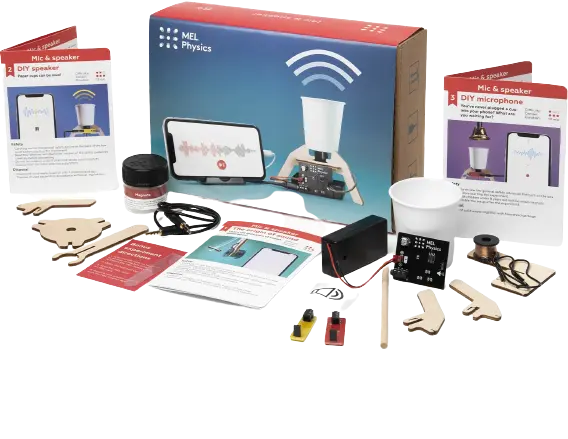
With the Mic and Speaker kit, they can see how sound is made, play around with microphones and headphones, and try out all sorts of cool sound experiments. Each kit is a whole new learning adventure.
Just remember: Make sure you’re there to help and keep an eye on your kids while they’re doing these experiments. Safety first!
MEL Science Chemistry Kits:
In chemistry kits, it’s super important to know all the safety rules. And if you’re a parent, keeping a close eye on your kid during experiments with chemicals is a must.
Using these chemicals the wrong way can cause accidents and health problems. Chemistry kits, just like physics ones, are super cool but need careful handling. Make sure to read the instructions or watch a video guide before trying any experiments.
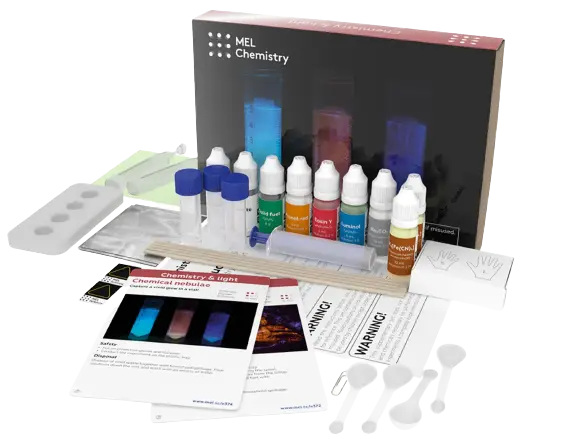
These chemistry kits are awesome for kids aged 10-16+ who are into the subject. If your kid already has a chemistry book covering the topics of these experiments, it’d be a great complement. Personally, I’ve never been big on chemistry, but in my research, I found tons of positive comments from parents about the projects in these kits.
MEL Science Medicine Kits:
If you or your kid dreams of being a doctor or pharmacist, check out MEL Science’s Medicine kits! They’ve got a bunch of kits made just for dentistry, ECG, Pharmacy, and more. Some even let you play doctor with simulated patients!
These medical kits are perfect for anyone from age 14 to 99+. They do cost a bit more than other hands-on kits, but when you see what’s inside, it totally makes sense.
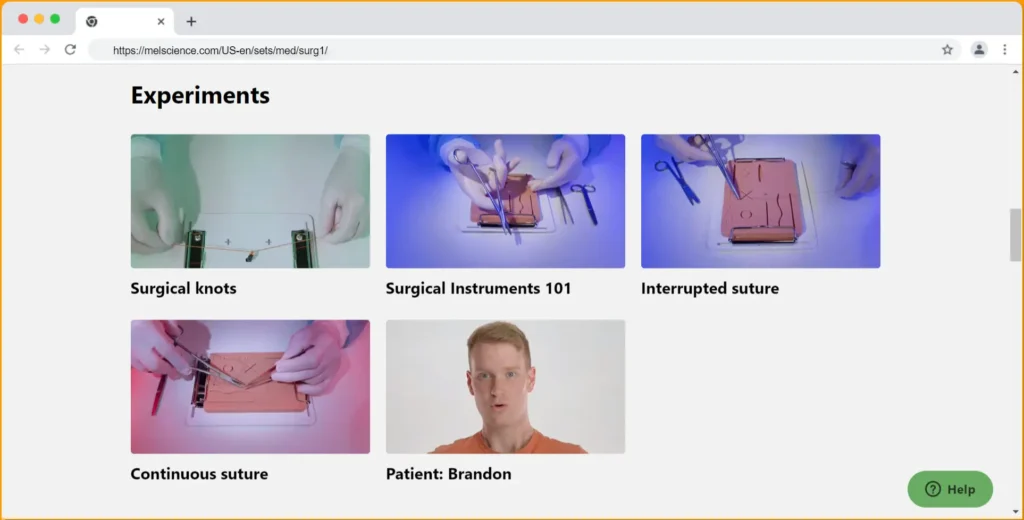
Take the Surgery kits, for example. In these, you get to mess around with different surgical needles, practice making cuts on fake skin with a real scalpel, and dive into all sorts of cool stuff. If you’re into medicine, this stuff is seriously cool.
Are MEL Science projects safe to use at home?
Safety is a top concern with science projects and experiments. Some involve electricity and chemicals, which can be risky.
MEL Science ensures all projects meet safety standards set by the US Consumer Product Safety Commission (CPSC) and the European Committee for Standardization (CEN). They confirm no projects involve explosives and are safe to use.
While some chemistry experiments require extra care, most kits are generally safe. Projects with hazardous substances are clearly marked with a WARNING badge.
It’s crucial to follow instructions, watch videos, and use VR guides carefully. Kits for STEM are like educational toys, easy for kids to handle. Parents should provide support and supervision during learning and experimentation.
How much does MEL Science cost?
If you love what you’re hearing about MEL Science and think it could be a game-changer for your kids (and maybe even yourself), the big question is probably: “How much does it cost and is it worth it?”
So, let’s break down the pricing for you.
MEL Science keeps it simple with its pricing. If you go for the yearly subscription, it’s $29.90 per month, which is the most budget-friendly option.
This gets you one kit, no matter which subjects you pick. Or, if you prefer, you can go for the monthly plan at $39.90 per month. Just remember, this is per kit, but you can share it among 2-3 kiddos. Plus, you’ve got the freedom to switch subjects whenever you feel like it.
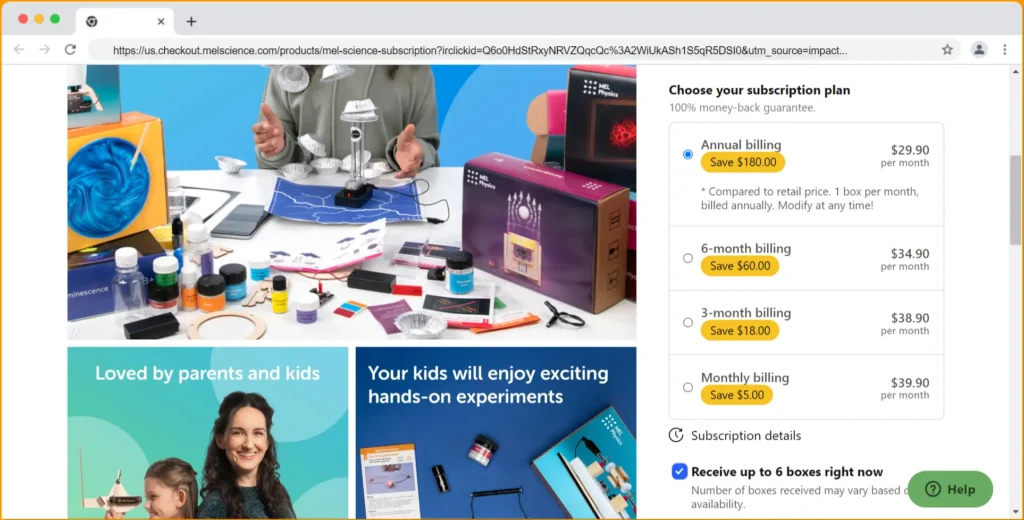
If you’re up for the annual billing, it’s $358.80 for one box. With this deal, you’ll get up to six kits upfront, and then one kit each month afterward, all in your chosen subject.
Now, when it comes to billing, you can choose multiple subjects, but you’ll only get one kit per month. So, it’s smart to stick to one subject at a time.
Oh, and heads up: the medical kits are a tad pricier at $59.90 per month with annual billing. But that’s because they cover a wider age range (from 14-year-olds to folks who’ve seen a few more birthdays) and come with cool extras like interactive patient stuff.
Now, here’s the bummer: you can’t buy MEL Science kits separately. But honestly, when you look at the awesome experiments and kits they’ve got for STEM, Physics, and Chemistry, the prices are totally justified.
From time to time, MEL Science also offers free trials that you may also access if you’re not sure bout its kits. You can subscribe to our newsletter and we’ll keep you updated with MEL Science sn other relevant offers.
My views about MEL Science:
A while back, I got my hands on some MEL Science kits, and after digging into them, I figured I’d share my thoughts in this MEL Science review.
First off, I gotta say, their STEM and Physics projects really caught my eye. Plus, their apps are top-notch for getting a grip on science through hands-on experiments. And let’s not forget the VR goggles for chemistry – that’s some next-level stuff right there.
Sure, at $29.90 a pop, these kits might seem a bit pricey, but trust me, they’re worth every penny.
As for which kits to go for, well, that’s up to you, but I’d definitely recommend checking out their STEM, Physics, and Chemistry projects.
All in all, MEL Science rocks for kids who dig tinkering with science stuff and having a blast while learning. If you’re a parent hoping to spark your kid’s curiosity in science, definitely give these kits a shot.
And to wrap up this MEL Science review, here are a couple of other options worth considering.
MEL Science Alternatives:
MEL Science isn’t the only game in town when it comes to science and STEM kits. Check out these cool alternatives:
KiwiCo:

In my view, MEL Science might not be the best pick for little ones who are all about playing and exploring. That’s where KiwiCo steps in.
Just like MEL Science, KiwiCo offers a monthly subscription box but with a wider array of stuff for younger kids. You’ll find artsy projects, puzzles, and games in there, covering all sorts of topics like geography, history, and culture.
But if you’re after a hands-on, science-heavy gig for kids aged 10 and up, MEL Science could be more up your alley. Their kits come with clear instructions and even throw in some virtual reality (VR) action to spice up the learning vibe.
On the flip side, if you’ve got younger kids or crave a mix of educational fun, KiwiCo’s the way to go.
Read more: MEL Science Vs KiwiCo: Which is best?
Spangler Science Club:

The Spangler Science Club is exclusive to the United States but packs a wider array of experiments than MEL Science. They cover biology, physics, and chemistry, and their kits come with everything you need for hands-on, interactive fun.
Cost-wise, both MEL Science and Spangler Science Club offer similar prices, but Spangler’s kits can be bought individually and often go on sale.
So, if you’re in the US and torn between these two options, give the Spangler Science Club a shot too!
Little Passports:

Now, this cool monthly subscription service sends its kits to four awesome countries: Australia, the USA, Canada, and New Zealand.
Little Passports wants to spark kids’ curiosity about different countries, cultures, and traditions. Each month, they send out a package with a passport, stickers, activity books, souvenirs, and more. It’s all about helping kids dive into a new country and its way of life.
On top of that, they’ve got online games, puzzles, and videos to make learning even more fun. While they do offer science and STEM kits too, their main focus is on geography and culture.
Choosing between the two services depends on what the kid and the parent are into.
Now It’s your turn:
I hope you enjoyed this MEL Science review and found it useful. Now I’d like to hear from you…
Do you find MEL Science kits worth it for your kids? And, Are you going to take its free trial?
If you face any issues with MEL Science, feel free to ask me. I will be always happy to help you. Now let me know your thoughts.
(To support my blog, we may use affiliate links in this post. Rest assured, they don’t affect our honest reviews.)
